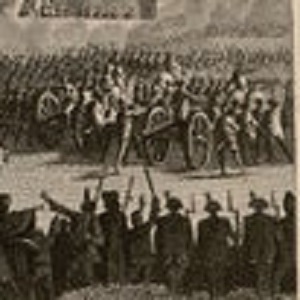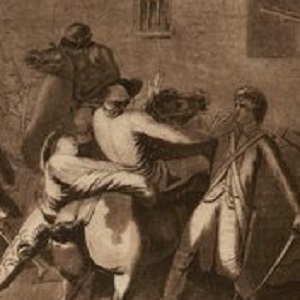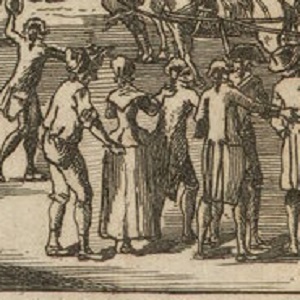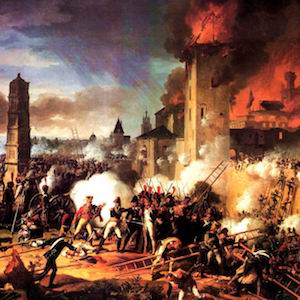Politics

Toussaint L’Ouverture
A slave inspired by the French Revolution’s egalitarianism, Toussaint saw himself as French and struggled for French control of the island of Saint Domingue. Nonetheless, he had no intention of letting whites rule, for he wanted blacks to control their own destinies.

The Mode of Exterminating the Black Army as Practised by the French
The fighting between the French and the Haitians was very bloody. When the French tried to put down Toussaint in 1802, it took them some five months with an expeditionary force of 23,000. Supplied by locals, the French seized the towns, gradually extending their control to the countryside.

Bonaparte, First Consul of the French Republic
From the beginning it was clear that Napoleon’s political support was closely tied to his fortunes in war. This engraving celebrates the victory over the Austrians at the battle of Marengo in Italy, June 1800.

Image of the King’s Departure
This engraving depicts the King, his wife, and his children meeting at half–past midnight on 21 June 1791, about to board a carriage in which they will flee secretly from Paris toward the border. The King and Queen were poorly disguised as servants to a German noblewoman.

Return from Varennes, Arrival of Louis Capet in Paris
Following his arrest, Louis and his family are returned to Paris. Large, silent crowds looked on disapprovingly.

Fleeing by Design or the Perjurer Louis XVI
Another engraving of the King’s arrest portrays the guard apprehending Louis and his family in their flight from Paris in June 1791. From Varennes, the royal family is brought back to Paris accompanied by three deputies of the National Assembly, armed guards, and a sometimes angry crowd.

Louis XVI Stopt in his Flight at Varennes
This romantic English painting of the King’s flight suggests only a few feet separated the King from escape.

Arrest of the King at Varennes, 22 June 1791
These images, all engraved and widely circulated years after the event, show four different moments of the arrest. Each successive image renders the scene increasingly dramatic. The first, a woodcut executed shortly after the event, shows the postman alone recognizing the King.

Bonaparte, First Consul, Putting Away His Sword after the General Peace
The engraving celebrates the peace treaties of 1801 and 1802. The lack of perspective in this image reflects the vision that Napoleon wanted the French to have when they thought about his actions. Making peace proved to be one of Napoleon’s more popular decisions.

Battle For and Taking of Ratisbon, April 23, 1809
The general peace agreement lasted a scant two years after the treaty of 1801.